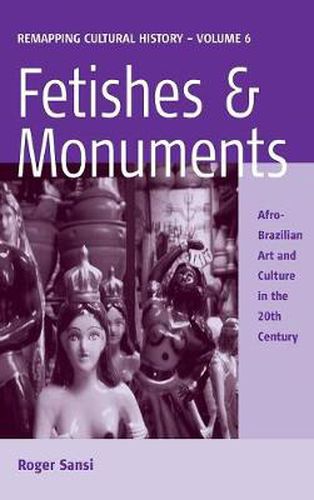Readings Newsletter
Become a Readings Member to make your shopping experience even easier.
Sign in or sign up for free!
You’re not far away from qualifying for FREE standard shipping within Australia
You’ve qualified for FREE standard shipping within Australia
The cart is loading…






One hundred years ago in Brazil the rituals of Candomble were feared as sorcery and persecuted as crime. Its cult objects were fearsome fetishes. Nowadays, they are Afro-Brazilian cultural works of art, objects of museum display and public monuments. Focusing on the particular histories of objects, images, spaces and persons who embodied it, this book portrays the historical journey from weapons of sorcery looted by the police, to hidden living stones, to public works of art attacked by religious fanatics that see them as images of the Devil, former sorcerers who have become artists, writers, and philosophers. Addressing this history as a journey of objectification and appropriation, the author offers a fresh, unconventional, and illuminating look at questions of syncretism, hybridity and cultural resistance in Brazil and in the Black Atlantic in general.
$9.00 standard shipping within Australia
FREE standard shipping within Australia for orders over $100.00
Express & International shipping calculated at checkout
One hundred years ago in Brazil the rituals of Candomble were feared as sorcery and persecuted as crime. Its cult objects were fearsome fetishes. Nowadays, they are Afro-Brazilian cultural works of art, objects of museum display and public monuments. Focusing on the particular histories of objects, images, spaces and persons who embodied it, this book portrays the historical journey from weapons of sorcery looted by the police, to hidden living stones, to public works of art attacked by religious fanatics that see them as images of the Devil, former sorcerers who have become artists, writers, and philosophers. Addressing this history as a journey of objectification and appropriation, the author offers a fresh, unconventional, and illuminating look at questions of syncretism, hybridity and cultural resistance in Brazil and in the Black Atlantic in general.